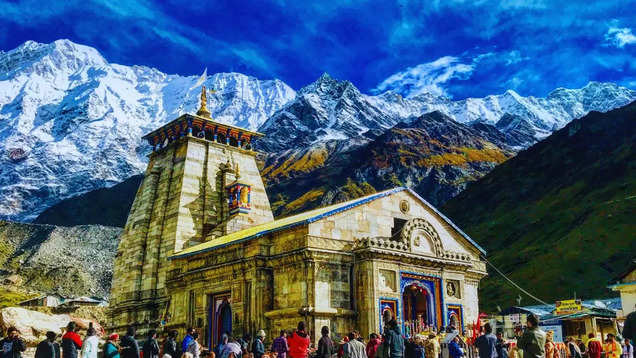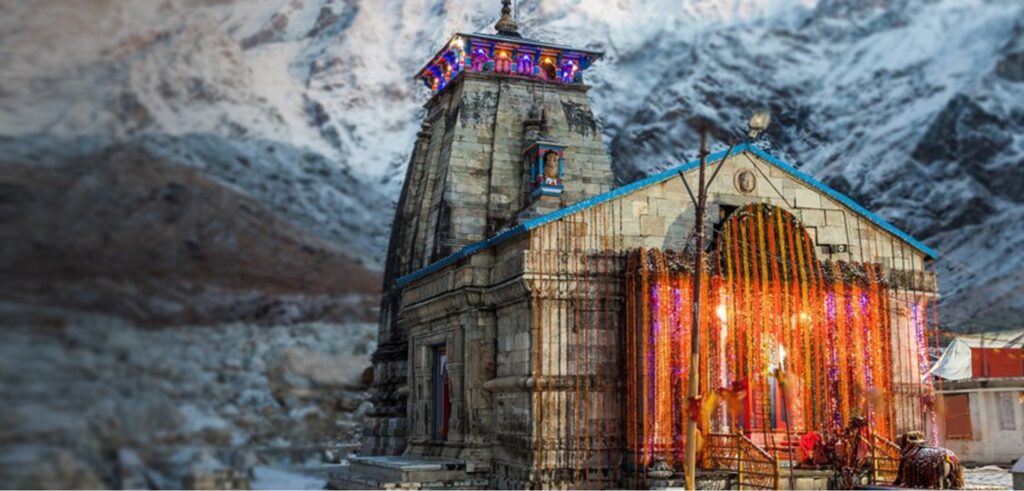Kedarnath is one of the most important pilgrimage sites for Hindus, dedicated to Lord Shiva. Situated in the state of Uttarakhand, this holy place is a part of the famous Chota Char Dham Yatra, which includes Badrinath, Gangotri, and Yamunotri. Kedarnath is also one of the five temples of Panch Kedar and is counted among the 12 Jyotirlingas of Lord Shiva in India.
Kedarnath Dham Temple Open & Close Date 2025
The opening date of the Kedarnath Temple is announced on the auspicious morning of Mahashivratri. On this day, the Badrinath-Kedarnath Temple Committee also declares the opening dates for all Char Dham temples. For 2025, the Kedarnath Temple will open for pilgrims from 2nd May.
Spiritual Importance of Kedarnath
As per our ancient legends, after the battle of Mahabharata, the Pandavas felt guilty for killing their own family and wanted to seek forgiveness from Lord Shiva. But the Lord did not want to meet them, so he took the form of a bull and tried to hide in the mountains. When the Pandavas found him, he dived into the earth, and his hump remained at Kedarnath. The rest of his body parts appeared at four other places—Tungnath (arms), Rudranath (face), Madmaheshwar (belly), and Kalpeshwar (head and hair). Together, these five places are known as Panch Kedar.
Location and Natural Beauty
Kedarnath is located in Rudraprayag district of Uttarakhand, at a height of 3,583 metres above sea level, near the origin of the Mandakini River. Kedarnath town has a small population of around 830 people and is approximately 223 km from Rishikesh and 86.5 km from Rudraprayag. The temple is surrounded by majestic snow-covered mountains like Kedarnath Peak (6,940 m) and Kedar Dome (6,831 m), creating a divine and peaceful atmosphere.
The journey to Kedarnath is not easy, but it is full of spiritual energy and natural beauty. Most devotees either walk or take a pony ride to reach the temple, especially during the yatra season.
Architecture of Kedarnath Temple
Kedarnath Temple is believed to be built by the Pandavas and later restored in the 8th century by Adi Shankaracharya Ji. Made from large grey stone slabs, the temple looks strong and ancient, standing tall even in extreme cold and snow. It is a wonder how such heavy stones were carried and placed at such a high altitude in olden times.
The main entrance of Kedarnath Temple faces east. Pilgrims stand in a queue outside the temple, especially during the yatra season (April to November). Opposite of the kedarnath temple there is a large idol of Nandi, It is believed that if you whisper your wish in Nandi ji’s ear, it gets fulfilled. Next step for pilgrims is Mandap. Mandap is the large hall area where devotees gather, chant mantras, and wait for darshan. From the Mandap, they move forward to the Garbha Griha which is the innermost part of the temple, where Shivlinga is situated. And this Shivlinga looks like the back of a buffalo. Pilgrims are allowed to touch and offer water, bel patra, and flowers directly on the lingam, depending on temple rules and time of day.







